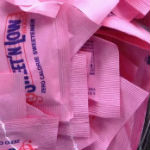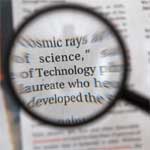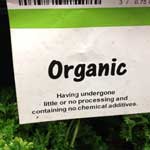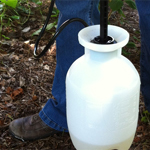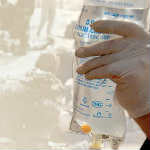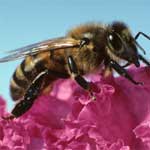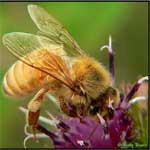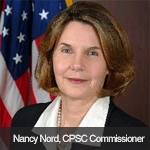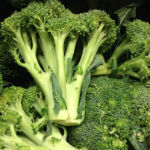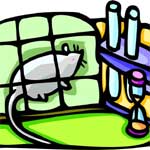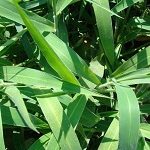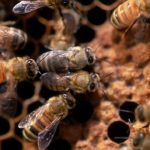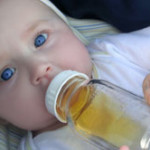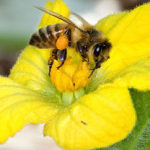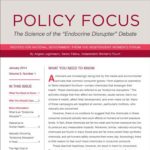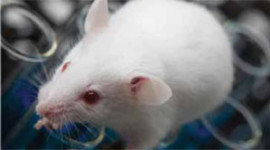"Artificial Sweeteners: Cancer Causing or Cancer Curing?" by Center for Accountability in Science. In case you needed further evidence that scientific opinion is constantly changing, new research presented this week finds evidence that saccharin, an artificial sweetener found in brands like Sweet ‘N Low ®, may be a tool in treating cancer. The researchers found that saccharin binds to a protein found in many cancerous cells, carbonic anhydrase, disrupting its activity and potentially stopping … [Read more...]
IARC Classification of Glyphosate
"IARC Glyphosate Cancer Review Fails on Multiple Fronts," By Academics Review. The International Agency for Research on Cancer Monograph evaluation of certain insecticides and herbicides earns an F grade for failure to consider all the available studies, placing weight on weak and discredited studies (several in the advocacy community are already using this report claiming it is a vindication of the discredited Seralini GMO cancer claims), and most importantly failure to consider if glyphosate … [Read more...]
Organic Farming: “Natural” not Always Best
"Why Organic Can't Fulfill Our Food Supply Ideals," By Steve Savage. Almost any farmer or consumer could agree on the following ideals for our agricultural system: "Farming in ways that are best for us, best for the environment, and best for providing an adequate food supply." I believe that these are the goals and ideals of organic customers and organic farmers, and I share them. If organic could deliver on these “triple best” goals, I would be among its strongest supporters, but I don't … [Read more...]
Newsweek’s BPA Alarmism
"Newsweek's Chemical Alarmism," by Julie Gunlock. Newsweek really needs to do some fact checking. In a piece that ran last week on the safety of the chemical Bisphenol-A (commonly called BPA), writer Douglas Main couldn’t even do a simple Google search on his sources before publishing the piece. He writes (emphasis mine): "To date, there have been around 1,000 animal studies on BPA, and the vast majority show that it causes or is linked to many health problems, from alterations in fertility to … [Read more...]
Arsenic in Wine
"Arsenic in Wine: Dangerous or Beneficial?" by Angela Logomasini. Dan Nosowitz in Modern Farmer offers some insights on the recent class action lawsuit filed against California winemakers. The plaintiffs found that some inexpensive wines contained arsenic at levels exceeding the federal drinking water standard for this substance. Nosowitz rightly points out that the standard is for water, not wine and “people don’t, or shouldn’t, drink as much wine as water.” Read more. … [Read more...]
CPSC’s Selective Use of Data for Phthalates Study
"Data Torturing at the CPSC," By Angela Logomasini. James Mills of the National Institute of Child Health and Human Development lamented in an article in the New England Journal of Medicine back in 1993: “‘If you torture your data long enough, they will tell you whatever you want to hear’ has become a popular observation in our office. In plain English, this means that study data, if manipulated in enough different ways can prove whatever the investigator wants to prove.” Government regulators … [Read more...]
IARC’s Ruling on Glyphosate
"IARC’s Ruling on Glyphosate Ignores the Science," by American Council on Science and Health. This month’s meeting in Lyon, France, of the International Agency for Research on Cancer (IARC) – the branch of the UN’s World Health Organization that studies the relationship between environmental and lifestyle risk factors and cancer – focused on pesticides. The committee concluded that of the five pesticides evaluated, three were “probably carcinogenic,” a 2A classification, despite the fact that … [Read more...]
“Frog-pocalyspe”
"Apparently The Frog-pocalypse Is Still A Thing," By Hank Campbell. Lost in all of the hype and hysteria and White House panels on how industry is killing bees is the last indicator species that was being doomed by non-organic pesticides: frogs. It seems like a hundred years ago but it was only last decade that a biologist in a department at Berkeley got a friend of his, a member of the National Academy of Sciences, to hand-walk a paper on frogs past peer review and into PNAS - the Proceedings … [Read more...]
ACSH Comments to CPSC on Phthalates
"ACSH submission to CPSC re: Chronic Hazard Advisory Panel (CHAP) report on DINP" By American Council on Science and Health. Dear Chairman Kay: The American Council on Science and Health (ACSH) wishes to express our deep disappointment in the conclusions of the U.S. Consumer Product Safety Commission (CPSC) regarding the plasticizer chemical, diisononylphthalate (DINP). ACSH and our Scientific Advisory Panel, numbering 360+ experts and academicians, are concerned about the validity of the data … [Read more...]
CPSC’s Scientific Shenanigans
" CPSC's Scientific Shenanigans on Phthalates," Angela Logomasini. Many “stakeholders” have complained about the process through which the Consumer Product Safety Commission (CPSC) developed its proposed rule related to a class of chemicals called phthalates—and rightly so. In particular, the agency’s failure to allow public comment and open peer review of its Chronic Hazard Advisory Panel report (CHAP report) underscore the fact that bureaucrats want to avoid scrutiny that might hold them … [Read more...]
No Worries about Arsenic in Wine
"Dangerous Levels of Arsenic in Wine? Not So Fast," by Center for Accountability in Science. The internet has been buzzing about a new lawsuit claiming that popular wine brands contain “extremely high levels of arsenic.” But a closer examination of the “research” behind this lawsuit and the scary headlines shows that wine lovers don’t really have much to worry about. The plaintiffs are comparing the level of arsenic found in wine with the U.S. Environmental Protection Agency’s limit for … [Read more...]
CPSC Proposal on Phthalates Likely Harm
"CPSC Proposal on Phthalates Likely to Do More Harm than Good," by Angela Logomasini. On Monday, the Consumer Product Safety Commission will close the comment period for a proposed rule related to chemicals used to make soft and pliable plastics. While they claim to do this in the name of children’s health, it’s not clear that the rule will do more good than harm. The process and the “scientific” review that brings us to this proposed rule has been controversial, to say the least. I detail … [Read more...]
Bee Colonies Increase
"Bee Colonies In 2014 Increase Another 4 Percent," by Hank Campbell. The National Agricultural Statistics Service of the United States Department of Agriculture has released its honey report for 2014 and found it's boom times for bees. Hives increased again, another 4 percent, up to a whopping 2.74 million colonies, and honey production is up 19 percent. Yield per colony averaged 65.1 pounds, which is up 15 percent. Read more. … [Read more...]
Pesticides Don’t Cause Bee Colonies to Collapse
"EPA Study Finds That Neonics Not Causing Colony Collapse Disorder In Bees," By Hank Campbell. A few years ago, bees suddenly had a sharp decline in numbers. This "Colony Collapse Disorder" as it is called, is a disorder in the sense that it is a recurring phenomenon, detailed for the last 1,000 years even when record-keeping just consisted of sporadic anecdotes. It was noted more frequently as record-keeping became more thorough. so it appeared far more often by the 1800s. By the 1900s, … [Read more...]
Safety Rules for Laundry Detergent Packets All Wet
"Congresswoman Calls for New Safety Rules on Detergent," by Paula Bolyard. Rep. Jackie Speier of California is proposing a bill directing the Consumer Product Safety Commission to issue new rules establishing safety standards for liquid detergent packets. The Democrat Speier’s bill, the Detergent Poisoning and Child Safety (PACS) Act, directs the CPSC to impose new regulations on the color, design, and contents of detergent packets. Read more. … [Read more...]
Nord: CPSC US Flawed Data for Proposed Phthalates Rule
"Phthalates NPR: Flawed Theory Supported by Flawed Data," by Nancy Nord. On March 16, 2015, the comment period will close for the CPSC’s proposed rule banning specified concentrations of phthalates in children’s toys and child care articles. While those who make and use phthalates are well aware of this proceeding, it has much broader implications for the entire regulated community. The proposed rule is flawed not only in terms of substance but also of process. The manner in which it used a … [Read more...]
EWG Discredited by Scientists
"Discredited by Scientists, Ignored by Media - It's Time for EWG to Retire Decades Old 'List'" by SafeFruitsandVeggies.com. A five-year analysis of media coverage of the Environmental Working Group’s (EWG) so-called “dirty dozen” list shows a steady decline in overall coverage, unbalanced coverage and consumer reach. And last week, when EWG released its 2015 list, mainstream media outlets largely ignored the “list” and coverage dropped to negligible levels. Until 2010, EWG’s list had become one … [Read more...]
Scientists Critical of Media Reporting
"Scientists Blast Media Treatment of Science Stories," by Center for Accountability in Science. Effectively communicating complex research and scientific data to the public is incredibly challenging. While many scientists rely on the media to cover their work, a new survey from the Pew Research Center finds that most scientists think the media’s treatment of science stories poses serious problems. Specifically, the survey found: Read more. … [Read more...]
Questions for EWG
"A 'Half Dozen' Questions for EWG," by SafeFruitsandVeggies.com. As they have for the last 20 years, the Environmental Working Group (EWG) released its “dirty dozen” list today which inaccurately disparages many of the most popular fruits and vegetables. To correct and counter the misinformation promoted by EWG, the Alliance for Food and Farming (AFF) provides science-based information to consumers which clearly show the safety of these popular fruits and veggies and the nutritional benefits … [Read more...]
Atrazine in the News
"Atrazine Back in the News, Unfortunately, Thanks to EU’s Precaution," by American Council on Science and Health." EU Parliament, StrasbourgAtrazine, one of the most effective and commonly used herbicides (weed-killers) in the world, is back in the news. Today’s New York Times’ international business article discusses disparities in regulations that complicate Trans-Atlantic trade. Specifically referenced is the gulf that exists between American and European regulations of chemicals and … [Read more...]
Many Factors Behind Colony Collapse Disorder
"What Makes Honeybee Colonies Collapse?" by Joe Ballenger. Honeybee Colony Collapse Disorder has always interested me, because I’m interested in insect pathology – and this is probably the most important insect-pathology related event we’ll see in our lifetimes. I’ve written about CCD here at Biofortified, first in my post Colony Collapse Disorder: an Introduction. I followed this up with Are Neonicotinoids the Cause of Colony Collapse Disorder, where I talked about why the pesticide topic … [Read more...]
No Surprise: BPA is Safe
"Fed Wasted Millions on Activist-Spawned Media Frenzy About BPA Risks," By Angela Logomasini. After a decade or more of alarming headlines about the chemical Bisphenol A (BPA), you may be surprised to learn that it poses no significant health risks to humans, according to a recent European Union safety assessment. While such strong conclusions from a governmental agency may be politically surprising, the underlying science shouldn’t be. BPA is a chemical used to make hard-clear plastics and … [Read more...]
Neonicotinoid Ban in Europe Only Helps Pests
"Pests Invade Europe After Neonicotinoids Ban, With no Benefit to Bee Health," by Rebecca Randall. This month, more than 100 natural food brands, including Clif Bar and Stonyfield, joined together in a drive to encourage the Obama Administration to ban pesticides linked to bee deaths. The culprit, they say, is neonicotinoids, which is a class of chemicals commonly called neonics, introduced in the 1990s, that are mostly coated onto seeds to help farmers control insects. ...Yet, as activists … [Read more...]
BPA Exposure Deemed Safe, Again, Again and Again
"Exposure To BPA – It’s Not What Some People Think," By Steve Hentges. Both the European Food Safety Authority (EFSA) and the U.S. Food and Drug Administration (FDA) have recently released assessments that strongly support the safety of bisphenol A (BPA). In both cases, a body of studies documenting 1) low exposure, primarily from the diet; 2) efficient metabolism as BPA is absorbed in the gut; and 3) rapid elimination from the body provide key support for the safety conclusions. In contrast, a … [Read more...]
The Science of the ‘Endocrine Disrupter’ Debate
"Policy Focus: The Science of the 'Endocrine Disrupter' Debate," By Angela Logomasini. Americans are increasingly being told by the media and environmental activists that common consumer goods—from plastics to cosmetics to flame retardant-furniture—contain chemicals that endanger their health. These chemicals are referred to as “endocrine disrupters.” The activists charge that they affect our hormones, cause cancer, harm our children’s health, affect fetal development, and even make us fat. … [Read more...]
